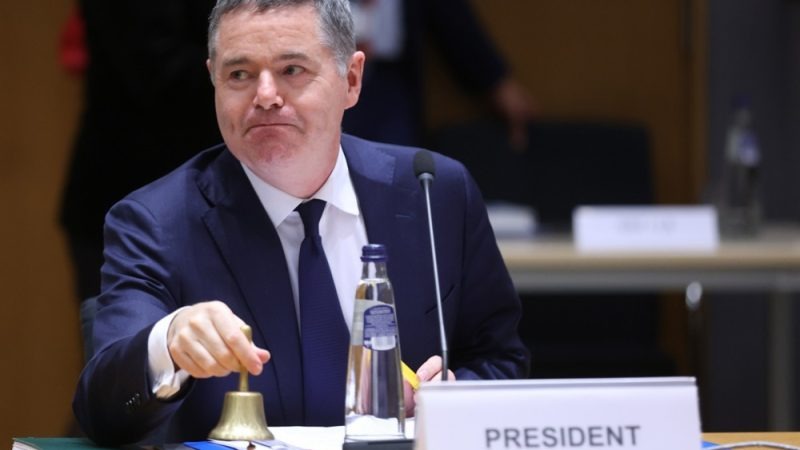Europe
Eurozone backs G7 plan on frozen Russian assets

Eurozone finance ministers on Wednesday (5 May) gave political support to a G7 plan to lend to Ukraine using profits from Russian assets, which they are ready to discuss after the G7 leaders’ summit in June.
The ministerial discussion showed appreciation for the constructive engagement with G7 partners on this issue and full support for it to continue,” Eurogroup President Paschal Donohoe, who chairs meetings of eurozone finance ministers, said in a statement.
Wednesday’s virtual talks were organised to explore options on how to frontload financial assistance to Ukraine by providing loans based on profits from frozen Russian central bank assets.
G7 summit in June is critical
The G7 had collectively frozen about $280bn of such assets, most of which were held at the Belgium-based Euroclear clearing house.
The new support came after G7 finance ministers last month warmed to a plan to withdraw up to $50bn from assets to support Ukraine’s war effort.
Finance ministers will consider the need for further discussion after the G7 summit in Apulia when they meet in June,’ Donohoe said after the talks.
Leaders of the G7 countries, which include the US, Canada, Japan, Britain, France, Germany and Italy, are due to meet in Italy on 13-15 June to consider various forms of the proposal.
90 per cent of profits to the ‘peace fund’, 10 per cent to the EU budget
According to the G7 plans, the profits from Russian assets held in the EU would cover the interest and at the same time repay the principal of the loan to Ukraine from the US, or the US together with other G7 countries, or from the EU’s own budget.
Annual profits would go into a special fund to cover Ukraine’s arms needs and the country’s reconstruction.
According to the plans, 90 per cent of the money will first go to the European Peace Fund (EPF), the bloc’s mechanism for reimbursing member states for arms supplied to Kiev, and then to the newly created Ukraine Assistance Fund (UAF).
The remaining 10% will go to the EU budget and be used to increase the capacity of the Ukrainian defence industry.
The plan includes the possibility of changing the purpose of the funds if Ukraine’s needs shift from defence to reconstruction.
People familiar with the talks said the plan would require risk-sharing between the EU and the US, as EU countries and the European Central Bank are wary of a potential risk to the EU’s single currency.
US plan is more ambitious
But Washington is also floating a more ambitious proposal in which countries would agree to use profits to provide Ukraine with a large loan as soon as possible, rather than settling for a few billion euros a year in the long term.
US Treasury Secretary Janet Yellen told the New York Times last week that the loan would be around $50 billion, backed by profits and interest income.
EU officials said that for the US-led plan to work, the EU would have to assure the lender that profits from Russia’s frozen assets would be used to cover the loan.